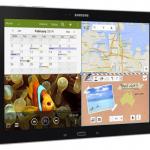
In today’s competitive business environment, it can be difficult to find new ways to engage customers in effective and memorable ways. The implementation of technology into modern life has given great scope for new ways to reach bigger audiences. However, often businesses that fail to evolve with the evolution of technology get left behind.
Yet, if a business evolves too quickly into new technology, it can leave some consumers behind.
Today we will be focusing on a method of customer engagement that finds the sweet spot between innovation and practicality: Barcodes. Though once a simple product identifier, barcodes have expanded to become an extremely versatile tool. Conveniently, they are also extremely easy to create. You can make a QR right now by using accessible online tools such as a QR Code Generator.
What types of barcodes exist and how can you utilise them?
There are two main types of barcodes: linear barcodes and 2D barcodes.
Linear barcodes are commonly found on product packaging such as a supermarket item. These are called UPC barcodes and will consist of a series of parallel lines that encodes information. These barcodes provide stores with product information and inventory tracking. This is mostly useful for business operations efficiency rather than customer engagement.
2D barcodes such as QR codes use a matrix of squares to encode information in two dimensions. This allows for the storage and transfer of more data. This can be used to direct customers to product information websites, social media accounts or even provide access to exclusive content.
Ways to Enhance Customer Engagement with Barcodes
Barcodes can enhance customer engagement in a variety of ways. We have compiled some of the most innovative QR strategies below:
Barcodes can provide product information to customers such as reviews, usage instructions and detailed specifications for technological products. This can add credibility to your business and demonstrates transparency and accessibility. There is also the added bonus of lower staff workload, meaning employees are able to use their extra time to make customer experiences more enriching.
Another way to use barcodes is to offer promotions, discounts or loyalty programs. This is an efficient way to directly deliver value to your customers and keep them coming back for more.
You may also use barcodes to increase consumer engagement by showing product demonstrations. By using the product demonstrations to present different uses for the product, customers can easily imagine themselves owning the products. If this is a consumable good, you may also use product demonstrations to increase the amount of usage situations, and therefore use frequency, increasing frequency of sales.
Examples of successful barcode campaigns that have resulted in increased customer engagement and sales
Still not convinced? Here are a few examples of past brand campaigns using barcodes that have been extremely successful. They may also be useful inspiration for your own campaigns.
PepsiCo used QR codes on its beverage packaging to launch a digital scavenger hunt. This campaign led to over 10 million scans and a significant increase in brand engagement.
L’Oréal launched a QR code campaign by putting them on beauty product packaging to provide customers with personalised makeup tutorials. The result of this was increased product sales and customer satisfaction.
Starbucks used QR codes on its coffee cups to direct customers to their mobile app. This led to a large increase in app downloads and customer loyalty.
Best practices for using barcodes to create seamless and engaging customer experiences
So, you have made up your mind that you want to use a QR code in your business to maximise customer engagement. How do you actually implement them for the best chance of success?
Firstly, you want to make them clear and easy to scan. This can be achieved by placing them in prominent locations where they are easily visible to customers. Using large barcodes with clear contrast can make them easier to scan. Since their goal is to make the customer experience more seamless, putting them in frustrating places is counterintuitive to success.
Next, you want to create a compelling call to action. As a customer, why would you want to scan this random QR code? You must clearly communicate a reason or prompt for customers to scan the QR code indicating what they should expect after scanning. This should be done clearly and concisely, or you will lose the customers attention or overload their senses.
Make sure you don’t overdo it. You do not want to overwhelm the customer by placing unnecessary QR codes everywhere. Avoid sending customers to generic landing pages or irrelevant content. It is also important that the website you are sending them to is mobile friendly, for ease of use. Remember, customers can only take in so much information at a time, so be strategic with quantity and purpose.
Lastly, make sure to track results. No good customer engagement strategy is complete without result analysis. Make sure to monitor the activity on your site after implementing this strategy, and see which links are most popular. This will help you identify successful QR codes and make adjustments as needed.
Barcodes are a fantastic way to boost customer engagement and (hopefully) sales as a small business. QR codes in particular are cost effective and easy to use, saving both time and money that is vital when starting a business.





